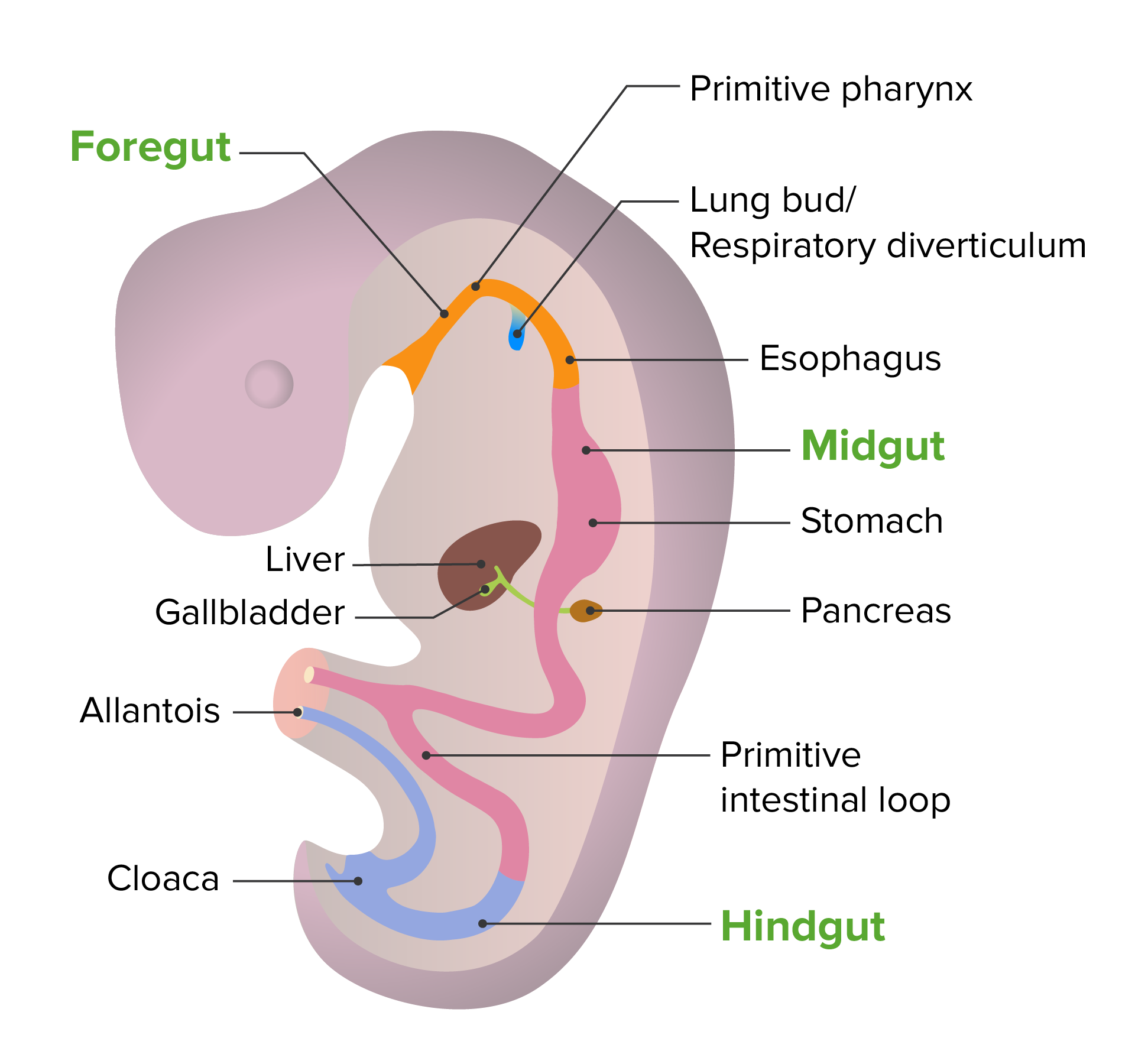Playlist
Show Playlist
Hide Playlist
Upper Airway Development
-
Slides 06-35 Upper Airway Development.pdf
-
Download Lecture Overview
00:01 We will begin our look at respiratory system development by starting with the upper airway and then moving into the area that carries air to the lungs and then development of the lungs themselves. 00:11 Now one thing that's important when we talk about the respiratory system is to note that respiratory system defects can also cause cyanosis. 00:20 Now it's very easy to think of the heart and malformations of the heart being the only thing that causes bluish tinting and cyanosis in the infant, but respiratory malformations can do the same thing. 00:31 Sometimes that cyanosis is present at all times and doesn't really depend on what the patient is doing. 00:36 Other times, it only manifest when the patient is exerting him or herself, or can only sometimes be manifest when the patient is feeding and forced to breathe through the nose and unable to breathe through the mouth. 00:50 So you may recall from our discussion of development of the face that the frontonasal prominence is gonna grow inferiorly and form the nose, the philtrum of the lip, as well as part of the palate. 01:04 One thing that occurs in this process is that we're going to have nasal placodes form on either side of the frontonasal prominence and they're gonna deepen and actually form the nostrils and the nasal cavities. 01:16 So if we take a sagittal view of the developing face, we can see that these nasal sacs have moved into the face and were kind of paralleling the oral cavity. 01:26 They're separated by the primary palate and the thin sheet of tissue called the oronasal membrane. 01:33 Make sense? It's separating the oral and nasal cavities. 01:36 As the nasal cavities deepen, that membrane get's stretched thinner and thinner, and is eventually going to rupture. 01:43 And it ruptures partially a little bit at a time but eventually we wind up with the connection of the nasal cavity back to the pharynx and that's what allows us to breathe through our nose, but also breathe through our mouth whenever necessary. 01:56 As development proceeds, a plug of material from the epithelium is gonna close off the nasal cavity and as that's occurring, Cranial Nerve I, has olfactory cells, nerve cells growing down in the upper third of the airway and forming the respiratory portion of the olfactory tracts. 02:15 We've got the olfactory epithelium, sensing smells that comes in the nose and translating that to the brain through the olfactory bulb. 02:24 As all these is proceeding, the hard palate forms, the soft palate stretches out, and the connection of the nasal cavity to the pharynx is maintained. 02:34 That connection is known as a choana. 02:36 You've got two choanae; one in the left, one on the right, and they're separated by the nasal septum. 02:43 You have a single oral cavity that's also connecting to the pharynx, and that connection is vitally important because without this choanae, we're not able to breathe through our nose and get air further down towards our larynx. 02:55 If we have failure of the oronasal membrane, to completely rupture, we have atresia of the choanae, meaning, that we don't have a connection from the nasal cavity to the pharynx. 03:06 Choanal atresia is one of the hallmarks to what is known as CHARGE Syndrome. 03:10 The C is for Coloboloma of the iris. 03:13 H, for heart defects; A, is for choanal atresia; R, for growth retardation or growth delay; G, for genital and urinary malformation; And E, for inner ear malformations. 03:26 And essentially, if you see a combination of these structures having problems, that's gonna be CHARGE Syndrome, and choanal atresia is one of the major problems associated with it. 03:37 Now, why is choanal atresia a problem? If you don't have a connection from your nasal cavity to your pharynx, it means you're unable to breathe through your nose. 03:45 Now, if this happened only on one side, You'd probably be okay because you'd still have one nasal cavity allowing air to move in to your larynx, but bilateral choanal atresia means that every time an infant attempts to feed, it's gonna be unable to breathe. 03:59 And so it's gonna have to feed quickly and then break off and work to get some air into its lungs because its gonna be unable to breathe while feeding and may even become cyanotic when attempting to feed. 04:12 This affects roughly 1 in 8000 live births and it's more prevalent in female infants than males. 04:18 Fortunately, surgery can be done to open up the choanae, Although, if there's a significant thickening or bony oronasal membrane, that surgery may be a little more pronounced than simply rupturing a thin membrane. 04:32 Thank you very much and we'll move on discuss further segments of the respiratory system.
About the Lecture
The lecture Upper Airway Development by Peter Ward, PhD is from the course Development of Thoracic Region and Vasculature.
Included Quiz Questions
The nostrils and nasal cavities are formed from what embryonic structure?
- Nasal placodes
- Frontonasal prominence
- Maxillary prominence
- Stomodeum
- Mandibular prominence
Failure of the oronasal membrane to rupture will cause what condition?
- Choanal atresia
- Cleft palate
- Cleft lip
- Brachygnathia
- Craniofacial dysmorphism
Customer reviews
5,0 of 5 stars
| 5 Stars |
|
5 |
| 4 Stars |
|
0 |
| 3 Stars |
|
0 |
| 2 Stars |
|
0 |
| 1 Star |
|
0 |




